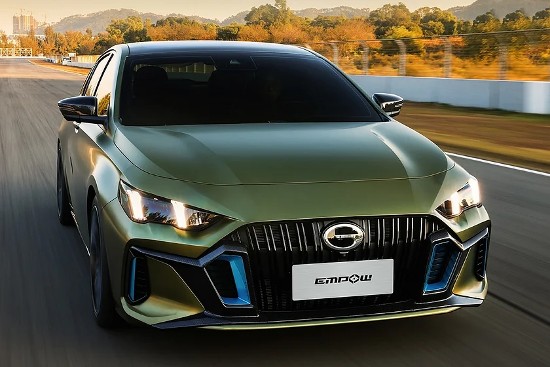Ammonia is a gas consisting of one nitrogen atom and three hydrogen (NH3). It is a stable compound that is used for industrial and commercial applications. In homes, it can be found in cleaning products. It got its name from the Egyptian god, Ammon, where the compound was harvested from animal dung. It is used in fertilizers and explosives. It is a catalyst in the production of synthetic fibres and resins. It is an important compound used by oil refineries, prevents latex coagulation in rubber production, and hardens final products in metallurgical processes.
In pursuit of a net-zero emissions future, ammonia is seen as an important compound. Ammonia produced from green energy sources serves as an energy storage medium. It is easily transported in liquid form and can be cracked to produce green hydrogen which is a zero-emission fuel. It also can be burned to produce energy without emitting greenhouse gasses (GHGs).
Toyota Looks at Green Ammonia to Power Vehicles
Toyota is the world’s largest maker of automobiles. It developed the first hybrids. (Full disclosure, my current car is a Toyota Venza running on gasoline and lithium-ion batteries.)
Toyota has been a skeptic when putting all its eggs into the electric vehicle (EV) basket. It has had limited success with the Mirai, the first commercial hydrogen fuel cell car. Its vehicle lineup is dominated by internal combustion engine (ICE) cars and trucks that use gasoline and diesel fuels. It also has well-established expertise with hybrid-powered vehicles that combine batteries and small ICE powerplants.
It, therefore, shouldn’t be too surprising for the company to explore new fuel sources for ICE vehicles. With no carbon atoms in ammonia (NH3), using it to fuel vehicles means no carbon emissions. So heavily invested in ICE technology, the company may see green ammonia fuel as a stay of execution. Ammonia-powered vehicles when compared to EVs could be easier to support within the transportation industry and supply chain and, as a result, cheaper to build and maintain. And green ammonia would make these cars as eco-friendly as EVs.
Toyota owns 50% of a Chinese vehicle manufacturer, the GAC Group. This year it launched its first ammonia-powered model, a four-cylinder car that produces 161 horsepower and a very small carbon footprint.
Vehicle challenges using ammonia as fuel include that it is harder to ignite than gasoline or diesel and it burns slower. Pure ammonia requires high boost pressure and compression to compensate for the ignition issue. Blending hydrogen with ammonia corrects the problem.
The Challenge to Produce Green Ammonia
Today, ammonia is produced for industrial uses using the Haber-Bosch process, a method invented early in the 20th century to synthesize the chemical compound using hydrogen and nitrogen. The process uses high pressure (200 to 400 atmospheres) and 400 to 650 Celsius (750 to 1,200 Fahrenheit) temperatures with natural gas, coal or oil providing the heat and the resulting high carbon footprint.
Just how high? According to the International Energy Agency (IEA), direct emissions from ammonia production produce 450 Megatons of CO2 annually with indirect emissions amounting to 170 Megatons. The main sources of these emissions come from the production for use in fertilizers. Compared to steel and cement, that is twice the amount or 2.4 tons of CO2 per ton produced.
To convert ammonia production to make it green means using renewable energy sources to provide sufficient heat and pressure. Siemens is working with the University of Oxford to take electricity produced from wind to do hydrogen electrolysis to synthesize ammonia. The Siemens Green Ammonia Demonstrator at the Rutherford Appleton Laboratory in the United Kingdom uses water electrolysis powered by a wind turbine to extract hydrogen which is then combined with nitrogen from the air to produce ammonia for energy storage.
Creating an Ammonia Distribution Network
The same distribution challenges faced by EVs is one that Toyota’s ammonia-powered cars will face. Where do you fuel up? For EVs, it has involved creating a fast-charging network as pervasive as the current distribution infrastructure that serves gasoline and diesel vehicles.
How large is the fossil fuel distribution network? In the United States today, there are 168,000 stations. In Europe, 140,000. In Canada, 12,000. In China, more than 22,000, Russia, 25,000, Australia, 6,500, the United Kingdom, more than 8,300, and Japan with 29,000.
For ammonia-powered cars, Toyota will have to find room in the fossil-fuel inn to make a go of its venture or face the same challenges that its Mirai model has faced and hydrogen-powered vehicles in general that have attempted to break into the mainstream of the green-vehicle revolution.
The comparison between hydrogen and fossil-fuel infrastructure is stark. At the beginning of this year, the Green Car Congress noted that hydrogen fuel stations had finally surpassed the 1,000 mark globally. In the United States, the number of places to fuel up with hydrogen amounted to less than 100. How can you compete with a hydrogen-fuel-cell-powered vehicle like the Mirai with so few places to fuel up?
















